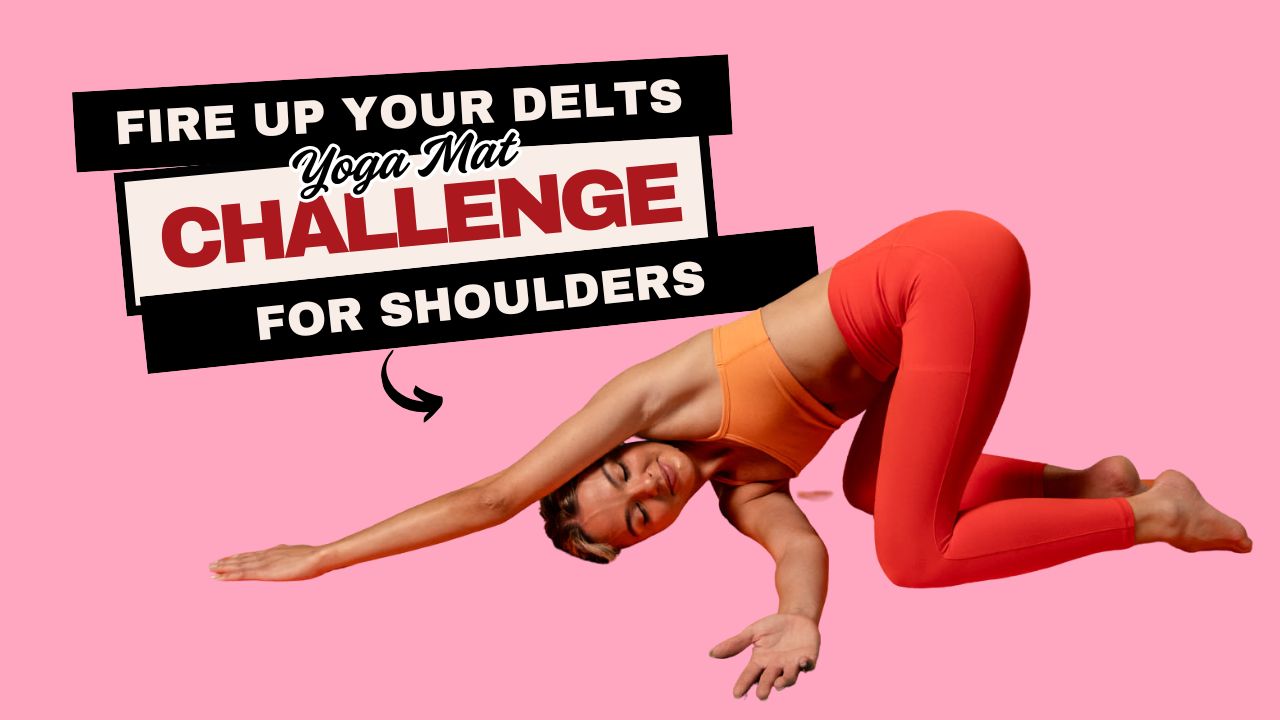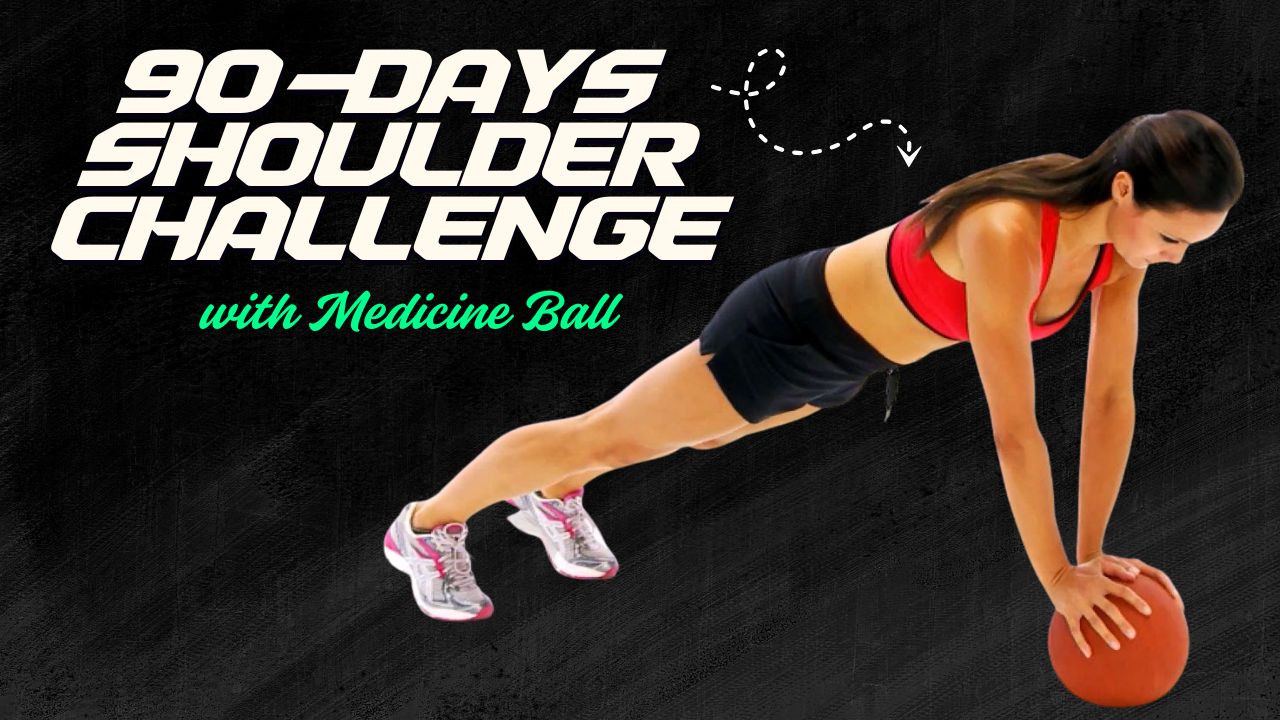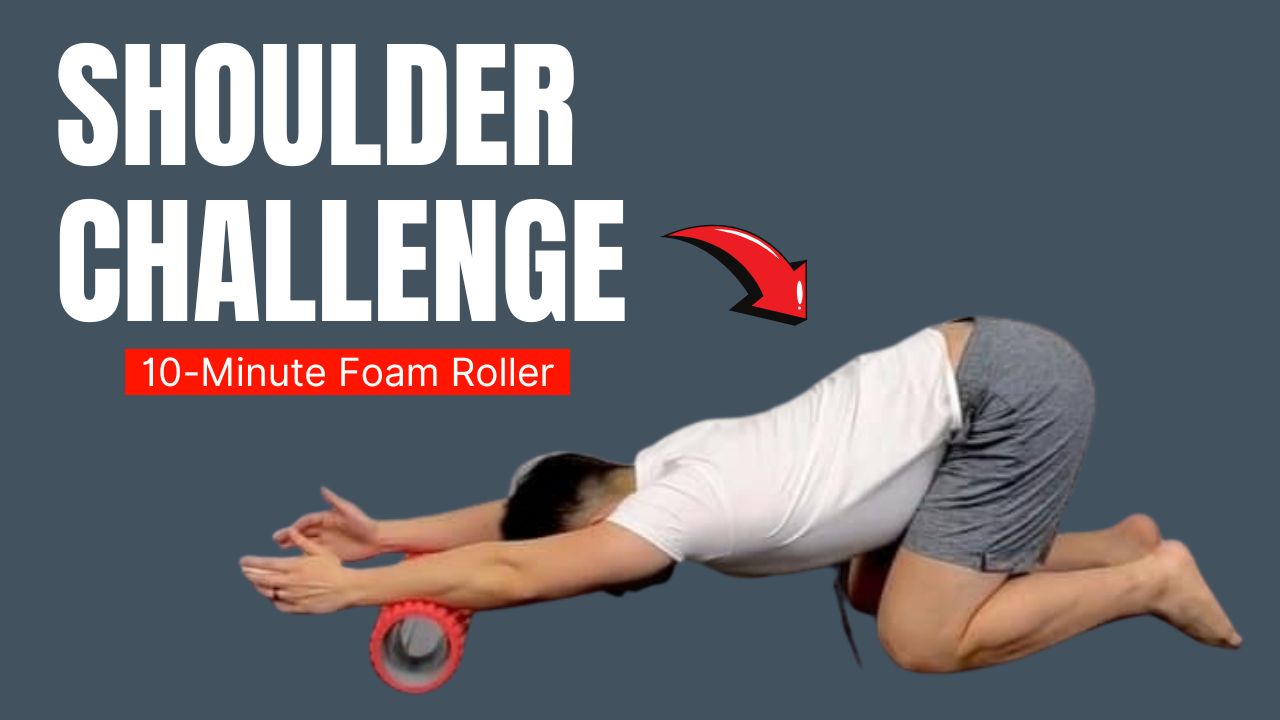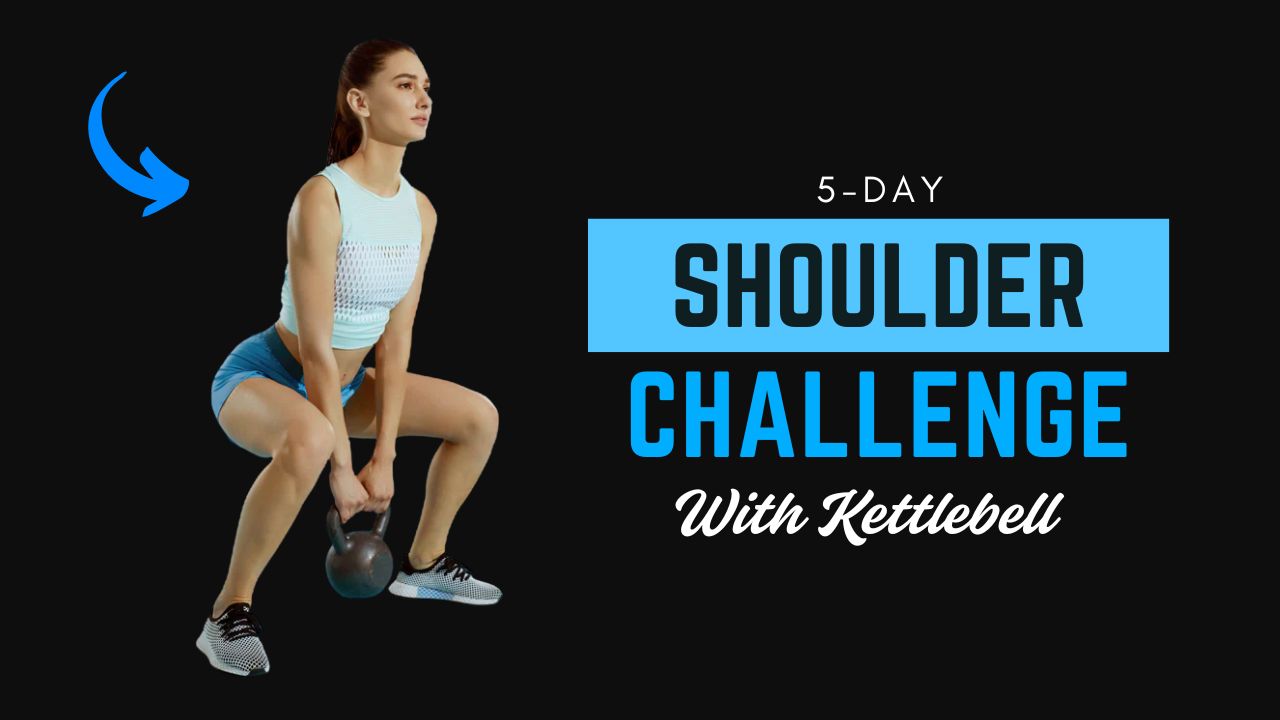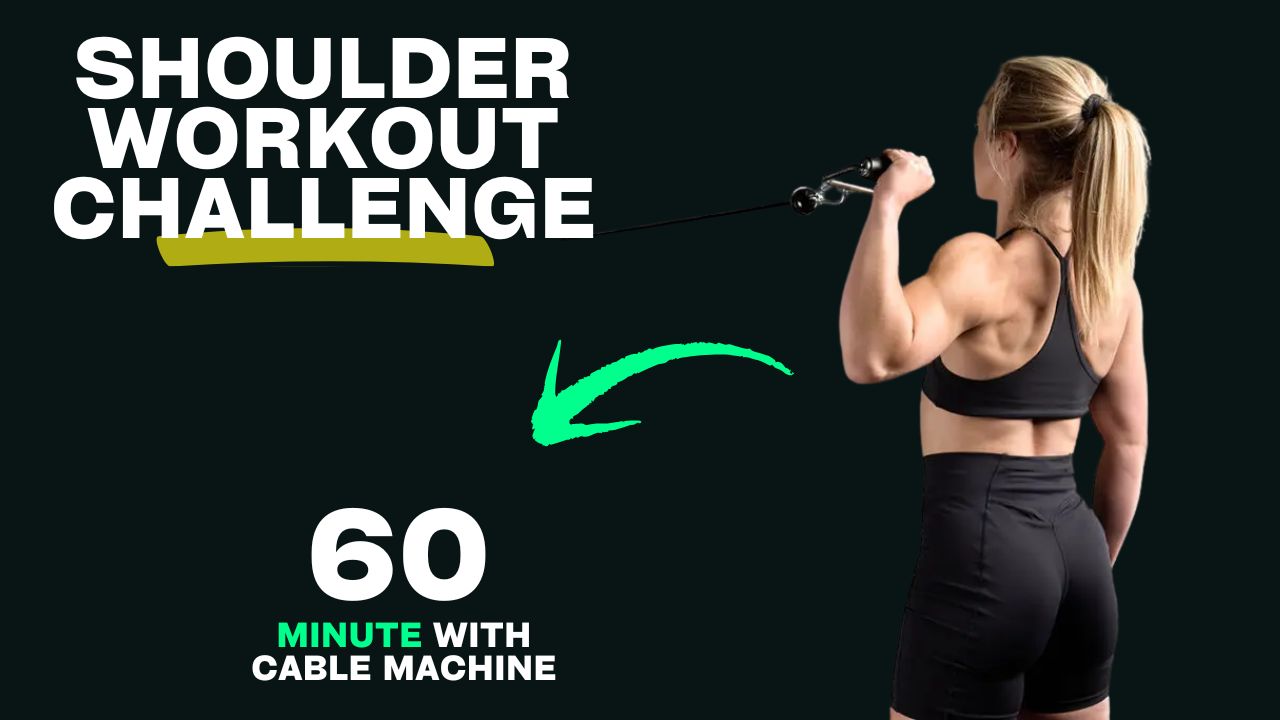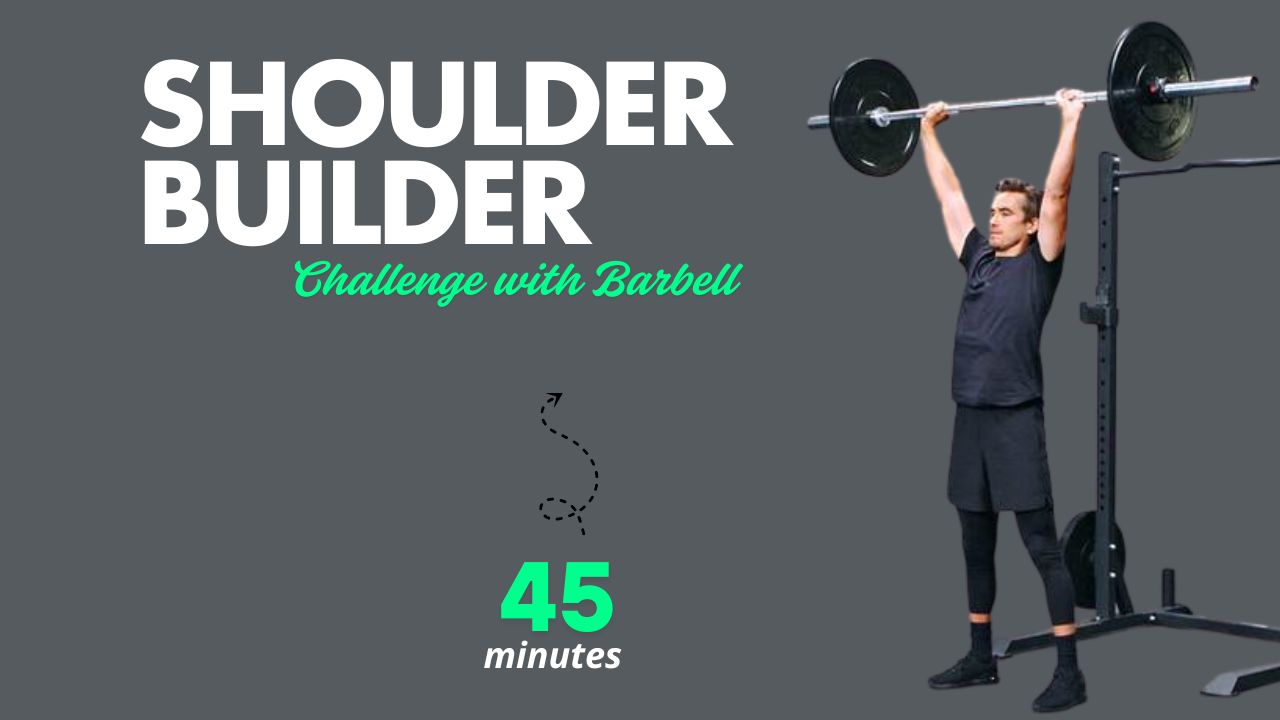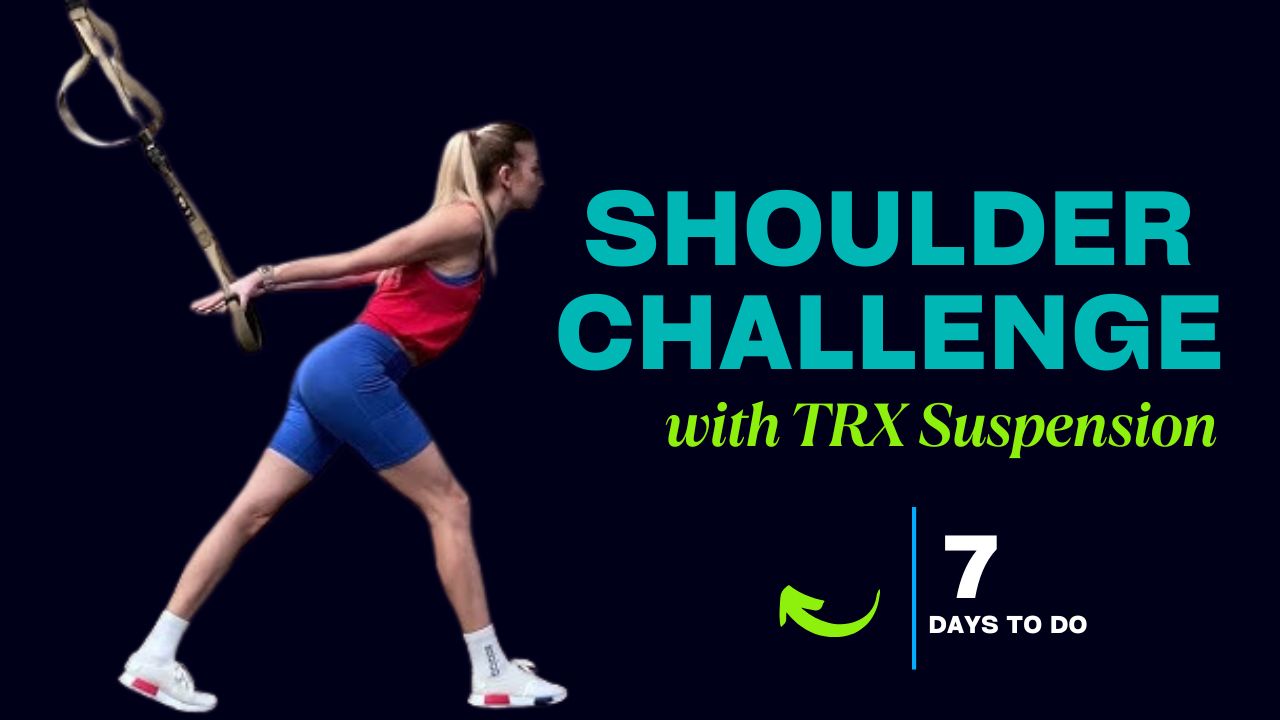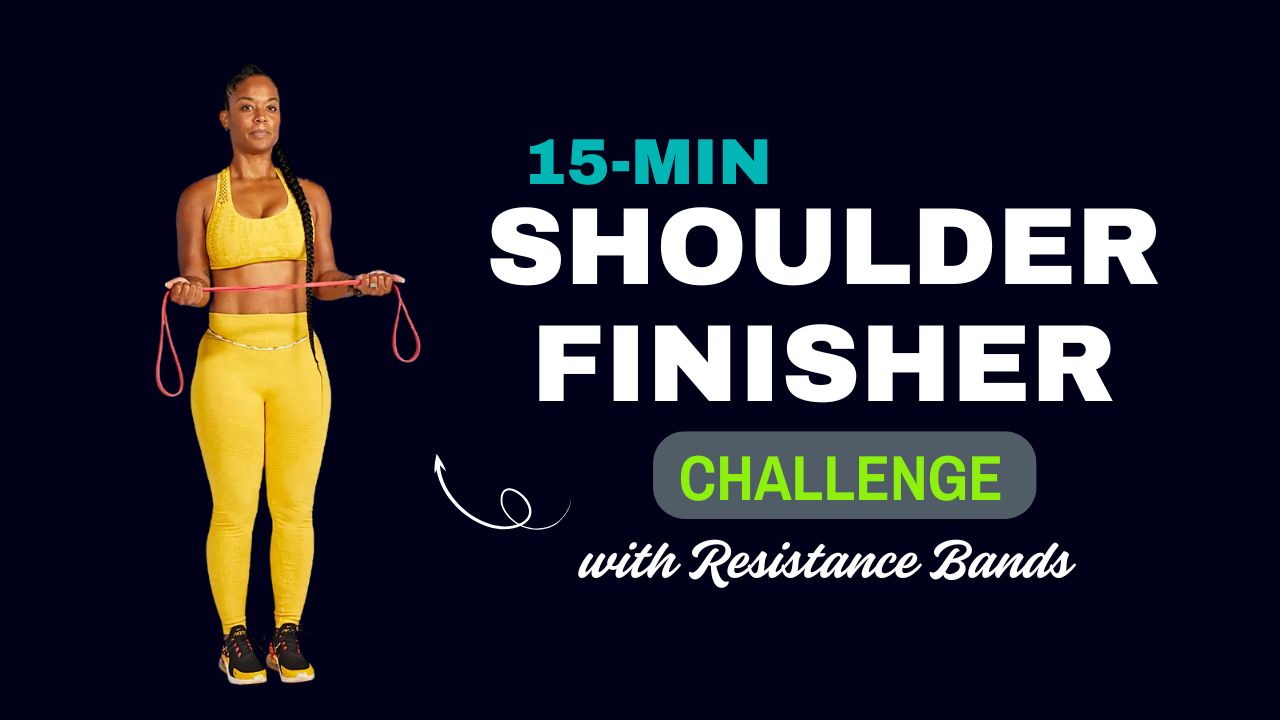Strong, well-defined shoulders don’t just make your physique look powerful—they also improve posture, enhance upper-body strength, and support better performance in daily activities and sports.
Here’s a fact you may not know: your shoulder joint is one of the most mobile joints in your body, allowing a remarkable range of motion, but that flexibility comes with a price—it’s also one of the most injury-prone areas if not trained correctly.
In the fitness world, shoulder gains are often associated with heavy dumbbells and barbells, but the truth is, you can build lean, sculpted shoulder muscles using only your bodyweight.
This 21-Day Bodyweight Shoulder Blaster Challenge is designed to target all three heads of the deltoids (anterior, lateral, and posterior), along with stabilizing muscles like the rotator cuff and trapezius, using functional, joint-friendly movements.
Over the next three weeks, you’ll follow a progressive routine that blends strength, endurance, and stability work—without needing a single piece of gym equipment.

Table of Contents
Why Bodyweight Shoulder Training Works
Many people believe heavy weights are essential for shoulder growth. While resistance plays a role in hypertrophy (muscle growth), controlled bodyweight exercises create muscle tension, activate stabilizers, and can be modified for progression—resulting in both size and definition.
Myth Busted:
“You can’t build muscle without weights.”
This isn’t true. Your muscles respond to tension and time under load, not just dumbbell numbers. With the right volume, angles, and tempo, your bodyweight can be just as effective.
Do’s and Don’ts for the 21-Day Bodyweight Shoulder Blaster Challenge
| Do’s | Don’ts |
|---|---|
| Warm up your shoulders and upper body before every session. | Skip the warm-up, as this increases injury risk. |
| Focus on slow, controlled movements for better muscle activation. | Rush through exercises with poor form. |
| Engage your core during each movement to stabilize your body. | Let your hips sag or lose core engagement. |
| Progress gradually by increasing reps, sets, or hold times each week. | Jump straight to advanced variations without building strength. |
| Maintain proper shoulder alignment to avoid strain. | Allow your shoulders to roll forward during exercises. |
| Take your active recovery day seriously to allow muscles to repair. | Train shoulders intensely every day without rest. |
| Listen to your body and modify if you feel pain (not to be confused with muscle burn). | Push through sharp pain, which could indicate injury. |
| Pair the challenge with a balanced diet rich in protein for muscle growth. | Rely solely on workouts without paying attention to nutrition. |
The 9 Shoulder-Blasting Bodyweight Exercises
Each of the following exercises is included in the challenge. Perform them with proper form to maximize gains and avoid injury.
1. Pike Push-Up
Description:
A vertical pressing movement that mimics the overhead press, targeting the anterior and lateral deltoids. The pike position shifts more weight toward your shoulders compared to standard push-ups.
How to:
- Start in a push-up position, then walk your feet toward your hands, lifting hips high into a pike shape (like an inverted V).
- Place hands slightly wider than shoulder-width.
- Lower your head toward the ground by bending elbows outward.
- Push back to starting position, keeping your hips high.
Tip: Keep your core tight to maintain stability.
2. Handstand Hold (Against a Wall)
Description:
This static hold builds shoulder stability and endurance, while also training your traps and triceps.
How to:
- Face a wall and place your hands shoulder-width apart.
- Kick up into a handstand, letting your heels touch the wall for support.
- Engage your shoulders by pushing away from the ground.
- Hold for the desired time while breathing steadily.
Tip: Beginners can start with a wall walk instead of a full handstand.
3. Wall Walk
Description:
A dynamic full-body movement that strengthens shoulders, chest, and core while improving coordination.
How to:
- Start in a push-up position with feet against a wall.
- Slowly walk your feet up the wall while walking your hands closer to it.
- Move until your chest faces the wall (as close as comfortable).
- Reverse the motion to return to the starting position.
4. Dive Bomber Push-Up
Description:
A flowing push-up variation that works the front, side, and rear delts while also engaging the chest and triceps.
How to:
- Start in a pike position.
- Lower your head and chest toward the ground in a swooping motion, then push your chest forward into an upward dog position.
- Reverse the motion to return to starting position.
5. Lateral Plank Walk
Description:
An excellent shoulder stability exercise that also engages the core and obliques.
How to:
- Begin in a high plank position.
- Move your right hand and right foot sideways simultaneously, followed by the left side.
- Take 2–3 steps in one direction, then reverse.
6. Shoulder Tap Push-Up
Description:
A push-up variation that challenges shoulder stability and anti-rotation strength.
How to:
- Perform a push-up.
- At the top, lift one hand to tap the opposite shoulder.
- Alternate sides with each repetition.
7. Reverse Plank
Description:
Targets the posterior deltoids and traps while strengthening the entire posterior chain.
How to:
- Sit on the floor with legs extended and hands placed behind hips, fingers pointing forward.
- Lift hips toward the ceiling until your body forms a straight line.
- Squeeze your shoulder blades together and hold.
8. Arm Circles (Dynamic Warm-Up)
Description:
Improves blood flow, warms up the shoulder joint, and strengthens stabilizing muscles when performed under tension.
How to:
- Stand tall with arms extended to the sides.
- Make small controlled circles forward for 20–30 seconds.
- Reverse direction.
9. Isometric W Press
Description:
A low-impact move that activates the rotator cuff and middle deltoids for stability and endurance.
How to:
- Stand with elbows bent at 90 degrees, arms forming a “W” shape.
- Press arms outward slightly while keeping elbows in place.
- Hold the contraction for the given time.
Did You Know?
The rear deltoids are often neglected in training, which can lead to muscular imbalances and rounded shoulders. This challenge intentionally incorporates exercises like reverse planks and lateral plank walks to keep your posture aligned and prevent injury.
Progression Structure for the Challenge
This challenge uses progressive overload principles—each week either increases the reps, sets, or hold time to keep your muscles adapting.
21-Day Bodyweight Shoulder Blaster Routine
| Day | Exercise | Sets | Reps / Time | Rest |
|---|---|---|---|---|
| 1 | Pike Push-Up | 3 | 10–12 | 60 sec |
| Lateral Plank Walk | 3 | 8 steps each side | 45 sec | |
| Arm Circles | 2 | 30 sec each direction | 30 sec | |
| 2 | Handstand Hold | 4 | 20–30 sec | 45 sec |
| Shoulder Tap Push-Up | 3 | 8–10 each side | 60 sec | |
| Isometric W Press | 3 | 20 sec | 30 sec | |
| 3 | Wall Walk | 3 | 4–6 reps | 90 sec |
| Dive Bomber Push-Up | 3 | 8–10 reps | 60 sec | |
| Reverse Plank | 3 | 20–30 sec | 45 sec | |
| 4 | Repeat Day 1 | – | – | – |
| 5 | Repeat Day 2 | – | – | – |
| 6 | Repeat Day 3 | – | – | – |
| 7 | Active Recovery: Light stretching or yoga | – | 15–20 min | – |
Weeks 2 & 3 Adjustments:
- Increase reps by 2–4 for each exercise or add 5–10 seconds to hold times.
- Reduce rest by 5–10 seconds for endurance improvement.
Recovery & Nutrition Tips for Lean Muscle Growth
- Protein Intake: Aim for 1.6–2.2 g per kg of body weight daily.
- Sleep: 7–9 hours per night for optimal recovery.
- Mobility Work: Add 5–10 minutes of shoulder mobility drills on rest days.
- Hydration: Shoulders, like all muscles, need proper hydration for performance and recovery.
Conclusion
Building strong, defined shoulders doesn’t require expensive equipment or hours in the gym—what matters is consistent, targeted training and proper form.
This 21-Day Bodyweight Shoulder Blaster Challenge combines strength, stability, and endurance work to target all parts of your shoulders while also improving posture and preventing injury.
By progressively increasing reps, hold times, and intensity over the three weeks, your muscles are constantly challenged, leading to lean muscle growth and greater functional strength.
Remember, shoulders are one of the most mobile yet vulnerable joints in the body, so treat them with care, focus on controlled movements, and prioritize recovery.
At the end of 21 days, you’ll not only see more definition in your shoulders but also feel stronger and more capable in everyday movements—from lifting groceries to playing sports.
The challenge is just the start—keep these exercises in your routine, and your shoulders will continue to grow stronger, more balanced, and more resilient.
Frequently Asked Questions (FAQs)
Can I build muscle in my shoulders without lifting weights?
Yes. Muscle growth is triggered by tension and progressive overload, not just heavy equipment. Properly executed bodyweight exercises can effectively stimulate the deltoids and supporting muscles for lean muscle growth.
How often should I do this 21-day challenge?
Follow the schedule provided—six training days per week with one active recovery day. After completing the 21 days, take a short break before repeating or progressing to more advanced variations.
What if I’m a beginner and can’t do some exercises?
You can modify movements—reduce range of motion, perform them on your knees, or shorten hold times until your strength improves. Consistency will help you progress quickly.
Do I need warm-up exercises before starting?
Yes. Spend 5–10 minutes warming up your shoulders and upper body with dynamic stretches like arm circles, wall slides, or light mobility drills to prevent injury.
How long will it take to see results?
Many people notice increased endurance and strength within two weeks. Visible muscle definition may take 4–8 weeks, depending on your nutrition, effort, and recovery.
Will this challenge also work my arms and chest?
Absolutely. While it focuses on the shoulders, exercises like pike push-ups and wall walks also activate your chest, triceps, and core.
Can I combine this with other workouts?
Yes, but avoid heavy overhead pressing or intense upper-body work on the same days to prevent overtraining your shoulders.
Is this safe for people with shoulder injuries?
If you have an existing shoulder injury, consult a physiotherapist or doctor before starting. Some movements may need modifications or substitutions.
What should I eat for the best results?
Aim for a balanced diet rich in lean protein, complex carbohydrates, healthy fats, and plenty of vegetables. Adequate protein and hydration are essential for muscle recovery and growth.
Can I keep doing this after the 21 days?
Yes. You can continue with the same exercises, increase reps or hold times, or progress to harder variations for continued growth and strength gains.
